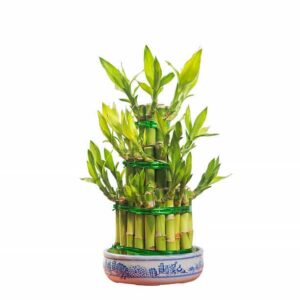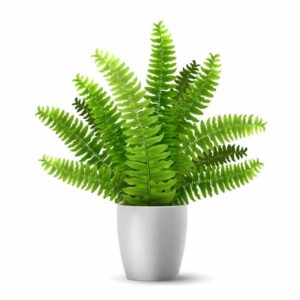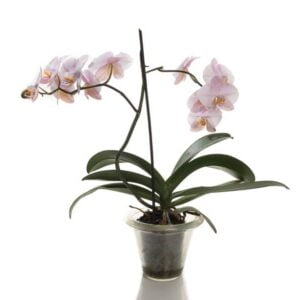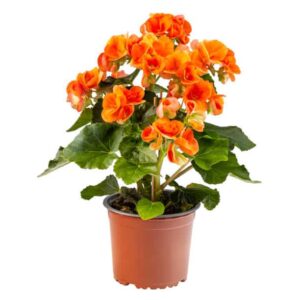In our quest to create the perfect indoor living space, we often overlook a critical element – indoor air quality. Excess humidity in our homes can lead to discomfort, mold growth, and even health issues. Fortunately, nature provides us with an elegant solution in the form of houseplants that excel at absorbing excess moisture from the air. In this article, we’ll explore the top five Plants for Humidity Control. These botanical marvels not only enhance the aesthetics of your living space but also contribute significantly to a healthier, more comfortable atmosphere. So, let’s embark on a journey into the world of greenery that can transform your home while tackling excessive humidity head-on.Sansevieria’s Remarkable Ability to Absorb Moisture
In the quest for a comfortable and healthy home environment, houseplants have emerged as unsung heroes. Beyond their aesthetic appeal, many plants possess remarkable qualities that contribute to our well-being. Among these botanical wonders is Sansevieria, commonly known as the Snake Plant or Mother-in-Law’s Tongue. This resilient and visually striking plant not only adds a touch of green to your living space but also boasts the unique property of absorbing excess moisture from the air.
 Ferns, with their lush green fronds and delicate, feathery leaves, have long been cherished as houseplants for their ornamental beauty. However, their ability to regulate indoor humidity is a lesser-known but invaluable attribute. These ancient plants, with a history dating back hundreds of millions of years, have developed unique adaptations that make them proficient at absorbing excess moisture from the air.
Ferns, with their lush green fronds and delicate, feathery leaves, have long been cherished as houseplants for their ornamental beauty. However, their ability to regulate indoor humidity is a lesser-known but invaluable attribute. These ancient plants, with a history dating back hundreds of millions of years, have developed unique adaptations that make them proficient at absorbing excess moisture from the air.

Sansevieria’s Remarkable Ability to Absorb Moisture
In the quest for a comfortable and healthy home environment, houseplants have emerged as unsung heroes. Beyond their aesthetic appeal, many plants possess remarkable qualities that contribute to our well-being. Among these botanical wonders is Sansevieria, commonly known as the Snake Plant or Mother-in-Law’s Tongue. This resilient and visually striking plant not only adds a touch of green to your living space but also boasts the unique property of absorbing excess moisture from the air.The Snake Plant’s Origins
Sansevieria has its roots in arid regions of West Africa, where it has adapted to thrive in low-light conditions and withstand extended periods of drought. Its distinctive appearance, characterized by upright, sword-like leaves with intriguing patterns, makes it a favorite choice for both novice and experienced plant enthusiasts. However, it’s the Snake Plant’s ability to regulate indoor humidity levels that truly sets it apart.A Natural Dehumidifier
One of the standout qualities of Sansevieria is its role as a natural dehumidifier. It achieves this feat through a process called transpiration, wherein it releases water vapor through tiny pores in its leaves. This natural moisture release has several advantages for indoor environments:- Humidity Control: Sansevieria helps maintain optimal indoor humidity levels. It absorbs excess moisture when the air is too humid and releases it when the air is dry, effectively acting as a natural humidistat.
- Preventing Mold and Mildew: Excessive indoor humidity can create a breeding ground for mold and mildew, which can be harmful to your health. By absorbing excess moisture, Sansevieria reduces the risk of these unwanted visitors.
- Improving Air Quality: Along with regulating humidity, Sansevieria also purifies the air by absorbing toxins such as formaldehyde and benzene. Cleaner air contributes to a healthier living space.
Caring for Your Snake Plant
To make the most of Sansevieria’s moisture-absorbing abilities, consider these care tips:- Light: Sansevieria is adaptable and can thrive in various light conditions, from low to bright indirect light. However, it typically grows more vigorously in brighter light.
- Watering: Allow the soil to dry out between waterings, as overwatering can lead to root rot. Sansevieria is quite forgiving and can tolerate occasional neglect.
- Potting Mix: A well-draining potting mix is essential to prevent waterlogged soil. Use a cactus or succulent mix or amend regular potting soil with perlite.
- Temperature and Humidity: Sansevieria can endure a range of temperatures, but it prefers a stable indoor environment. Avoid exposing it to extreme cold or drafts.
- Propagation: You can easily propagate Sansevieria by dividing mature plants or by leaf cuttings. This allows you to expand your collection and share the benefits with others.
In conclusion:
Sansevieria, with its striking appearance and remarkable ability to absorb excess moisture, is an excellent addition to any home. Its capacity to regulate humidity, purify the air, and enhance indoor air quality makes it a valuable ally in creating a healthy and comfortable living space. So, consider bringing a Snake Plant into your home and let this desert succulent work its natural magic.Lucky Bamboo (Dracaena sanderiana): A Natural Humidity Regulator for Your Home
Indoor plants do more than just add a touch of greenery to your living spaces. Some, like Lucky Bamboo (Dracaena sanderiana), offer a range of benefits, including the ability to regulate humidity levels in your home. This elegant and low-maintenance plant not only enhances your interior décor but also contributes to a healthier living environment.
Meet the Lucky Bamboo
Lucky Bamboo, despite its name, is not actually bamboo; it is a member of the Dracaena family. Native to the tropical rainforests of Central Africa, this plant has become incredibly popular as an indoor ornamental plant due to its striking appearance and ease of care. Its distinctive stalks, which can grow tall and slender or short and twisted, make it a unique addition to any room.Humidity Control Superstar
One of the standout features of Lucky Bamboo is its remarkable ability to absorb excess moisture from the air. This property makes it a natural humidity regulator for your home. Excess humidity can lead to a variety of problems, including mold growth, musty odors, and damage to your furniture and belongings. Lucky Bamboo steps in as a natural solution to combat these issues.How It WorksLucky Bamboo absorbs moisture through small pores in its leaves, a process known as transpiration. As it takes in water vapor from the air, it releases oxygen, making it a wonderful addition to your indoor air quality. The plant is highly efficient at maintaining a balanced humidity level, reducing the risk of problems associated with excessively dry or humid air.Care Tips for Lucky Bamboo
Taking care of Lucky Bamboo is relatively easy, even for those without green thumbs. Here are some essential care tips to ensure your Lucky Bamboo thrives:- Watering: Keep the plant’s roots submerged in water, and change the water every two to four weeks to prevent stagnation. Use distilled or purified water to avoid mineral buildup.
- Light: Lucky Bamboo prefers indirect, bright light. Avoid direct sunlight, as it can scorch the leaves.
- Container: Choose a container with enough room for the roots to grow. A clear glass vase is a popular choice, as it allows you to see the water level and root health.
- Temperature: Maintain a temperature between 65°F and 90°F (18°C to 32°C) for optimal growth.
- Fertilization: Feed your Lucky Bamboo with a diluted, balanced liquid fertilizer every two to three months during the growing season.
In conclusion:
Lucky Bamboo is not only a beautiful addition to your home but also a natural way to regulate humidity. Its ability to absorb excess moisture from the air helps maintain a healthy indoor environment while adding a touch of elegance to your living spaces. With minimal care, Lucky Bamboo can thrive for years, providing both aesthetic and practical benefits to your home.Consider bringing this unique and versatile plant into your living space, and you’ll enjoy the charm and humidity-controlling properties of Lucky Bamboo for years to come.The Humidity-Absorbing Marvel of Ferns
In our quest to create comfortable and harmonious living spaces, we often grapple with the challenge of maintaining optimal humidity levels indoors. Excessive moisture can lead to various issues such as mold growth, musty odors, and discomfort. While a humidifier or dehumidifier may seem like the obvious solution, nature offers an elegant and aesthetically pleasing alternative: ferns. Ferns, with their lush green fronds and delicate, feathery leaves, have long been cherished as houseplants for their ornamental beauty. However, their ability to regulate indoor humidity is a lesser-known but invaluable attribute. These ancient plants, with a history dating back hundreds of millions of years, have developed unique adaptations that make them proficient at absorbing excess moisture from the air.
Ferns, with their lush green fronds and delicate, feathery leaves, have long been cherished as houseplants for their ornamental beauty. However, their ability to regulate indoor humidity is a lesser-known but invaluable attribute. These ancient plants, with a history dating back hundreds of millions of years, have developed unique adaptations that make them proficient at absorbing excess moisture from the air.Why Ferns Excel at Humidity Control
- Frond Structure: The fronds of ferns are covered in tiny, hair-like structures called trichomes, which have the remarkable ability to trap moisture from the air. As humidity levels rise, these trichomes become more active in absorbing water vapor, helping to maintain an ideal balance.
- Transpiration: Ferns actively engage in transpiration, a process where they release water vapor through small pores called stomata on the underside of their fronds. This natural mechanism not only contributes to increasing humidity but also purifies the air by removing toxins and impurities.
- Adaptability: Ferns are highly adaptable and can thrive in various indoor environments. Whether you have a well-lit living room or a low-light bathroom, there’s likely a fern species suited to your space. Popular choices include the Boston Fern (Nephrolepis exaltata) and the Maidenhair Fern (Adiantum spp.).
- Low Maintenance: Ferns are generally low-maintenance houseplants. They don’t require constant attention, making them an excellent choice for both novice and experienced gardeners. Regular watering and indirect light are usually sufficient to keep them healthy.
- Aesthetic Appeal: Beyond their functional benefits, ferns add a touch of natural elegance to any room. Their graceful fronds can complement a variety of interior design styles, from traditional to modern.
Tips for Caring for Ferns
To maximize the humidity-absorbing benefits of your ferns, here are some care tips to keep in mind:- Light: Most ferns prefer bright, indirect light. Avoid exposing them to direct sunlight, which can scorch their delicate leaves.
- Watering: Keep the soil consistently moist but not waterlogged. Allow the top inch of soil to dry out between waterings.
- Humidity: Although ferns help regulate humidity, they thrive in environments with humidity levels between 40% and 60%. If your home is particularly dry, consider using a humidity tray or room humidifier.
- Pruning: Trim dead or yellowing fronds to encourage healthy growth and maintain the plant’s aesthetic appeal.
In conclusion:
Ferns are not only charming additions to your indoor garden but also efficient allies in the battle against excess indoor humidity. Their natural humidity-absorbing properties, coupled with their adaptability and aesthetic allure, make them an excellent choice for homeowners seeking both functionality and beauty in their living spaces. So, consider welcoming a fern into your home – it might just be the perfect solution to your humidity control needs.The Phalaenopsis Orchid’s Remarkable Humidity-Absorbing Properties
Orchids, particularly the Phalaenopsis orchid, are renowned for their exquisite beauty and elegance. Beyond their aesthetic appeal, these captivating plants possess an unexpected talent – they can help maintain healthy humidity levels within your home. Let’s delve into the remarkable properties of the Phalaenopsis orchid that make it an excellent choice for enhancing indoor air quality.
The Phalaenopsis Orchid: A Brief Introduction
The Phalaenopsis orchid, often referred to as the “Moth Orchid” due to the shape of its blossoms, is a genus comprising over 60 species native to Southeast Asia and the Philippines. These orchids have become exceptionally popular as houseplants, thanks to their stunning, long-lasting flowers and relatively low maintenance requirements. Beyond their aesthetic allure, Phalaenopsis orchids offer an unexpected benefit: they can act as natural desiccants, absorbing excess moisture from the air.Humidity Control: A Hidden Talent
Maintaining optimal indoor humidity levels is essential for both human health and the preservation of your home. Excessive moisture can lead to mold growth, musty odors, and a host of respiratory problems. This is where the Phalaenopsis orchid shines.These orchids have specialized aerial roots that can absorb moisture from the air. As they respire, they release water vapor, a process known as transpiration. This natural mechanism helps to regulate the humidity in the immediate vicinity of the plant. Consequently, Phalaenopsis orchids can effectively reduce excessive moisture in your home, creating a more comfortable living environment.Caring for Your Phalaenopsis Orchid
To maximize the humidity-absorbing benefits of your Phalaenopsis orchid, it’s essential to provide the proper care. Here are some tips:- Light: Place your orchid in indirect, bright light. They thrive in conditions with moderate to high light levels, but avoid direct sunlight, as it can scorch their leaves.
- Watering: Orchids are susceptible to overwatering. Water them sparingly, allowing the potting mix to dry out slightly between waterings. Watering every 7-10 days is often sufficient.
- Air Circulation: Adequate air circulation is vital. Ensure that your orchid’s environment is well-ventilated, as this will help it transpire more effectively.
- Humidity: While Phalaenopsis orchids can assist in managing humidity, they also require a specific humidity level to thrive. Aim for a humidity range of 50-70% in the vicinity of your orchid.
- Potting Mix: Use a well-draining orchid potting mix. Repot your orchid every couple of years to ensure its continued health and vitality.
Conclusion
The Phalaenopsis orchid is more than just a pretty face; it’s a natural desiccant that can contribute to a healthier indoor environment by helping to regulate humidity levels. By providing proper care and the right conditions, you can enjoy the beauty of this orchid while also benefiting from its remarkable humidity-absorbing properties. So, consider adding a Phalaenopsis orchid to your indoor garden, and let it work its magic in your home.Begonia Rex: Your Stylish Humidity Absorber
When it comes to houseplants that do more than just look pretty, Begonia rex, commonly known as the Rex Begonia or King Begonia, stands out as an elegant and functional choice. Beyond its eye-catching foliage, this plant boasts the remarkable ability to help regulate indoor humidity levels, making it a valuable addition to any home.
An Introduction to Begonia rex:
Begonia rex is a species of flowering plant native to the rainforests of India and Southeast Asia. It is known for its striking, ornamental leaves, which come in a variety of colors and patterns. These begonias are appreciated not only for their aesthetics but also for their air-purifying and humidity-absorbing properties.How Begonia Rex Absorbs Humidity:
One of the key attributes that make Begonia rex an excellent choice for maintaining indoor air quality is its ability to absorb excess humidity. This process, known as transpiration, is common in most plants. During transpiration, plants release moisture through small openings in their leaves called stomata. This natural process helps them cool down and take in essential nutrients. In the process, they also release water vapor into the air.However, Begonia rex is particularly efficient at transpiration, meaning it can release a significant amount of moisture into its surroundings. This can be especially helpful in homes with high humidity levels, as it assists in regulating moisture content in the air, creating a more comfortable living environment.Caring for Your Begonia Rex:
To maximize the humidity-absorbing benefits of your Begonia rex, it’s essential to provide it with the proper care. Here are some care tips:- Light: Begonia rex prefers bright, indirect sunlight. Avoid placing it in direct sunlight, as this can scorch its delicate leaves.
- Watering: Keep the soil consistently moist but not waterlogged. Water when the top inch of soil feels dry.
- Temperature and Humidity: These plants thrive in a relatively humid environment with temperatures between 60-75°F (15-24°C). If the air in your home is exceptionally dry, consider using a humidifier or placing a tray of water near your plant to maintain optimal humidity levels.
- Fertilization: Feed your Begonia rex with a balanced liquid fertilizer every 4-6 weeks during the growing season (spring and summer) to promote healthy growth.
- Potting: Repot your Begonia rex as needed, typically every 1-2 years, to refresh the soil and provide additional space for root growth.

